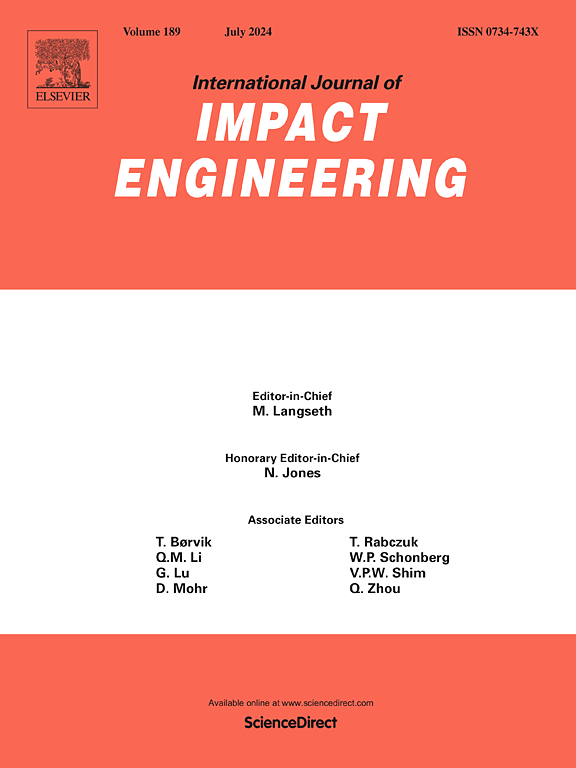A comparison of techniques to measure the conversion of plastic work to heat in 304L stainless steel under adiabatic conditions
IF 5.1
2区 工程技术
Q1 ENGINEERING, MECHANICAL
International Journal of Impact Engineering
Pub Date : 2025-01-09
DOI:10.1016/j.ijimpeng.2025.105220
引用次数: 0
Abstract
In this work, a cross-laboratory comparison is conducted to critically examine experimental techniques within the High-Strain Rate Mechanics of Materials Laboratory at the University of Utah and the Experimental Solid Mechanics Department at Sandia National Laboratories. The study is aimed at identifying, quantifying, and reducing sources of uncertainty in reported Taylor–Quinney coefficients. Vacuum arc remelted 304L stainless steel specimens extracted from the same ingot are tested in both laboratories under dynamic tension at nominal strain rates of and . Independent experiments at both the University of Utah and Sandia National Laboratories report Taylor–Quinney coefficients of and for and , respectively. Sources of variation between labs and practices to mitigate these are also discussed.
求助全文
约1分钟内获得全文
求助全文
来源期刊

International Journal of Impact Engineering
工程技术-工程:机械
CiteScore
8.70
自引率
13.70%
发文量
241
审稿时长
52 days
期刊介绍:
The International Journal of Impact Engineering, established in 1983 publishes original research findings related to the response of structures, components and materials subjected to impact, blast and high-rate loading. Areas relevant to the journal encompass the following general topics and those associated with them:
-Behaviour and failure of structures and materials under impact and blast loading
-Systems for protection and absorption of impact and blast loading
-Terminal ballistics
-Dynamic behaviour and failure of materials including plasticity and fracture
-Stress waves
-Structural crashworthiness
-High-rate mechanical and forming processes
-Impact, blast and high-rate loading/measurement techniques and their applications
 求助内容:
求助内容: 应助结果提醒方式:
应助结果提醒方式:


